The Ohio University Student Research and Creative Activity Expo is an opportunity each year for Physics & Astronomy students to present scientific information in a format that is often used at international scientific conferences. A panel of faculty members in the sciences serve as judges determines the winning posters. This year, four undergraduate majors and six graduate students from the department received top honors.
- See “Physics & Astronomy Undergraduates Take Honors at Research Expo.”
- Visit the Department’s Facebook album where students describe their research.
“It is a friendly environment where our students have a chance to explain their work to people who may not be familiar with scientific concepts,” explains Dr. David Ingram, Professor and Chair of the department. “The Expo provides a useful goal for participants to work towards in describing research they may have played a major role in.”
Oscar Avalos Ovando, a doctoral student in Physics & Astronomy, won First Place in the G-3 session for his poster “Classical ground states of magnetic chains with twisted long range interactions in MoS2 flakes.”
“We study chains of magnetic atoms set over molybdenum disulfide (MoS2) flakes, says Avalos Ovando. “In particular, we find what configuration they prefer. It is important to work to control the magnetic order, which could lead to designing future efficient and smaller computer devices. I study this topic because if you can discover how a given material works, you may be able to predict or control its behavior.”
Avalos Ovando is supervised by Dr. Sergio Ulloa, a professor in the department.
Nuclear physics doctoral student Andrea Richard won First Place in the G1 session for “Spectroscopy of Neutron-Rich Mg Isotopes in and around the Island of Inversion.”
Her adviser is Dr. Heather Crawford, an Adjunct Professor and Career-track Staff Scientist in the Nuclear Structure Group at Lawrence Berkeley National Laboratory.
“My project is concerned with understanding the structure of neutron-rich Mg isotopes,” Richard says. “This work is important because it affects our understanding of nuclear forces and how the structure of exotic isotopes changes. I study physics because I just love knowing how the world works and being able to use science to help advance knowledge in the world.”
Astrophysics doctoral student Doug Soltesz won First Place in the G2-session for “Development of a Charged-Particle Detector Array to Study Things that Go Boom in Space”. He works under the direction of Dr. Zach Meisel, an assistant professor in the Department.
“My research is about developing a charged particle detector array to study X-ray bursts,” Soltesz explains. “This is important to remove nuclear physics uncertainty from astrophysical models and to learn more about what happens within these explosions. I have always had an interest in stars and stellar explosions.”
Graduate student Second Place award winners include Kristyn Brandenburg, Nilaj Chakrabarty, and Reza Katebi.
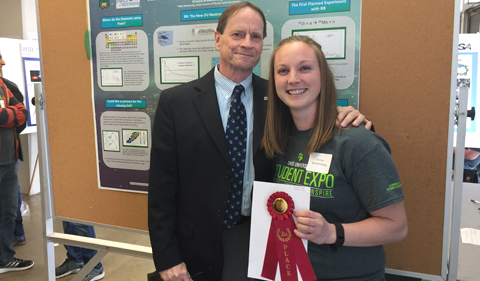
Kristyn Brandenburg about her poster “Development of a Neutron Long Counter for (alpha,n) Cross Section Measurements”: This work is exciting because it is about understanding the origin of the elements from Zn to Mo. Our measurements will help solve the mystery. Physics is awesome and the study of the stars is even cooler! I am excited to help humanity understand the way the universe works. (Dr. Zach Meisel, Adviser)
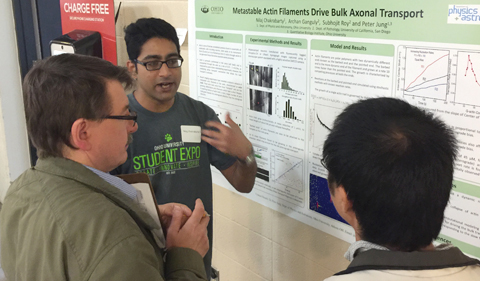
Nilaj Chakrabarty about his poster “Axonal Actin Transport Driven By Metastable Actin Filaments”: “My project is about figuring out the transport mechanism of an essential protein called actin. In axons, actin transports itself by assimilating into filaments and we study this phenomenon using both experimental methods and computer models. By figuring out the transport mechanisms, we can make inferences about the factors driving it. It a lot of diseases like ALS, there is a disruption in actin transport and through my model we can study the factors causing it. I relish the chance to solve problems that have a bearing on the real world, and at the same time work in close collaboration with experimentalists.” (Dr. Peter Jung, Adviser)
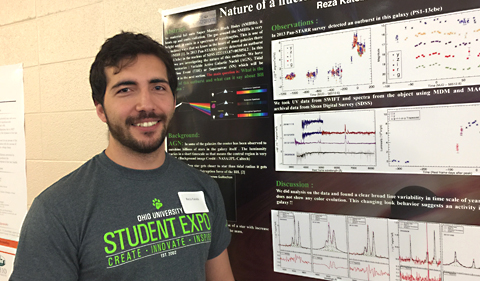
Reza Katebi about his poster “Changing look active galactic nuclei”: I am working on the nature of the outburst in the center of galaxies– which are caused by super massive black holes. This research will help us to understand the accretion disk. Since I was a kid, I have been interested in stars and at age 18 I was puzzled by black holes. That’s when I decided to study astrophysics. (Dr. Ryan Chornock, Adviser)


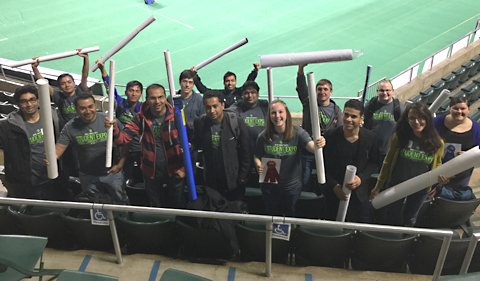
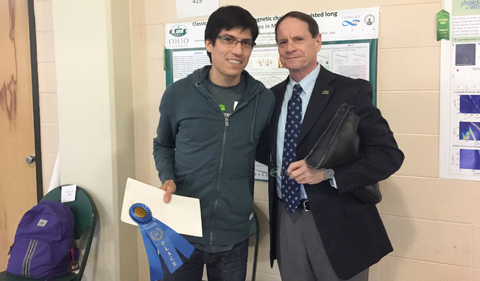
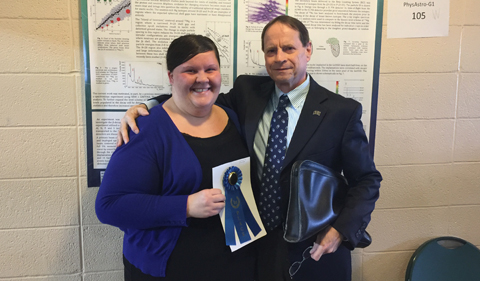
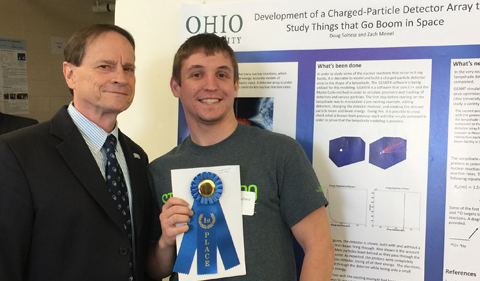

















Comments